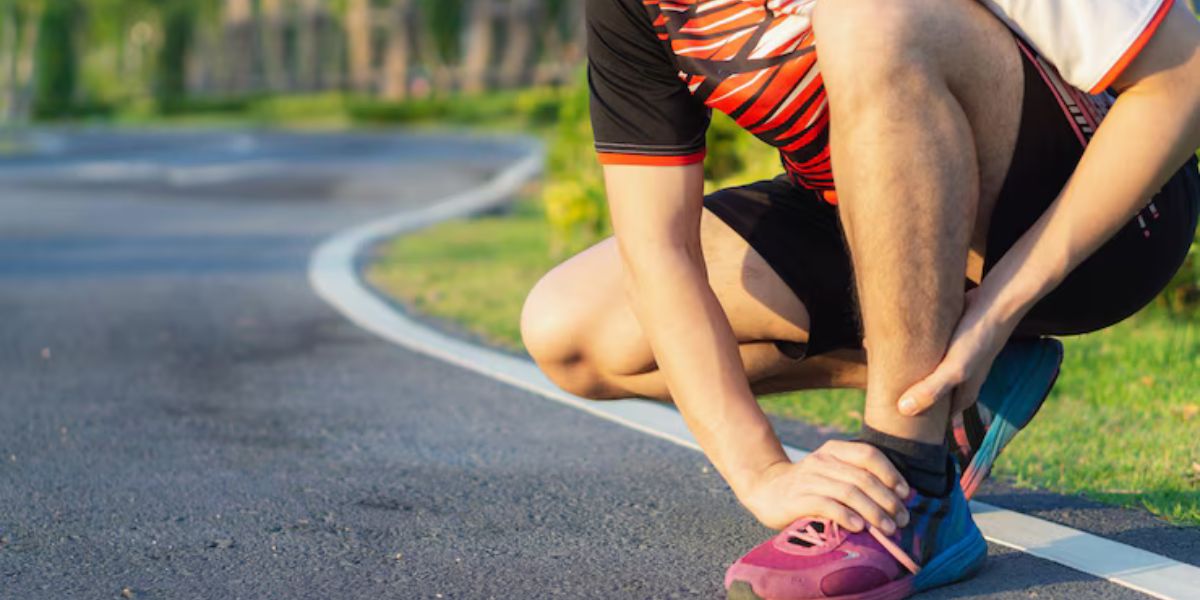What Is Heel Pain?
Heel pain after running is a common complaint among athletes and casual joggers alike. It often signals underlying issues such as plantar fasciitis treatment needs or even Achilles tendon pain caused by overuse. Many runners experience sharp discomfort or heel pain in the morning, especially after long or intense runs. This pain can stem from inflammation, small injuries, or stress on the foot’s ligaments and tissues. Understanding what causes heel pain after running is essential to prevent worsening symptoms and avoid long-term damage. Proper care, including rest, stretching, and selecting the best shoes for heel pain, helps runners recover faster and maintain their performance without setbacks.
Common Causes of Heel Pain
The most common cause of heel pain is plantar fasciitis, which happens when the thick band of tissue at the bottom of your foot gets inflamed. Other causes include heel spurs, which are calcium growths, and Achilles tendon pain that comes from overuse or tight calf muscles. People who are overweight may also experience heel pain and weight gain connections.
If you feel back of heel pain, it might be related to bursitis in the heel, especially if you’ve been walking or standing for long hours. Poor footwear, long runs, or sudden changes in activity levels can also trigger symptoms.
Heel Pain After Running: Why It Happens
Heel pain from running usually develops from repeated stress on the feet. Runners who don’t wear proper shoes, skip warm-ups, or have poor foot alignment are at higher risk. If your pain increases after jogging, it might point to plantar fasciitis or small tears in the Achilles tendon.
Many runners experience morning heel stiffness after long sessions. If you’re asking what causes heel pain after running, it’s often tight muscles, lack of support, or bad training form. Addressing these early is key to avoiding long-term injury.
Diagnosing Heel Pain
A doctor will begin your heel pain diagnosis by asking about your symptoms and medical history. They may press on different parts of your foot to see where it hurts the most. In some cases, they’ll order X-rays or ultrasounds to rule out fractures or check for heel spur symptoms.
If you’re wondering how to diagnose heel pain at home, start by observing when and where the pain appears. Pain only in the morning suggests plantar fasciitis, while pain all day could signal other issues like nerve problems or joint inflammation.
How to Treat Heel Pain (Home & Medical Options)
There are many ways to manage and treat heel pain. The most common method is to rest and use ice pack therapy for foot pain two or three times a day. Doctors may also recommend stretching exercises for heel pain to improve flexibility and reduce tension.
Wearing orthotics for heel pain or choosing the best shoes for heel pain can also reduce pressure on the heel. In serious cases, you may need shockwave therapy for plantar fasciitis, cortisone shots, or even surgery. Ask your doctor how to relieve heel pain at home if symptoms are still mild.
Best Ways to Treat Heel Pain After Running
If you run often, use a mix of rest, support, and good habits. Try stretching your calves and arches before and after workouts. Using ice right after a run helps with inflammation. Choosing the best home remedies for heel pain can stop pain from getting worse.
Don’t ignore pain after activity. If you’re asking can you run with heel pain, the answer is no—it can make things worse. Focus on foot care for runners, including massage, warm-up routines, and switching to low-impact exercises during recovery.
Complications of Untreated Heel Pain
Ignoring heel pain may lead to worse problems. Some people develop chronic heel pain treatment needs, which can involve injections, therapy, or long-term medications. Others may change the way they walk to avoid the pain, leading to hip or back issues.
If you don’t take action early, a small issue like foot arch pain can become a serious injury. That’s why it’s important to ask: can heel pain go away on its own? Sometimes yes, but often it needs care to fully heal.
Preventing Heel Pain from Running
You can avoid heel pain while running by building better habits. Always warm up and cool down with proper stretches. Avoid running on hard surfaces for long periods. Keep your weight in a healthy range to reduce pressure on your heels.
People who wear good shoes and build strength in their feet are less likely to get hurt. If you want to know how to prevent heel pain while running, start by checking your shoes, surface, and pace.

Can Heel Pain Be Prevented Long-Term?
Yes, simple steps can help you avoid heel pain in the future. Maintain a regular stretching routine, especially if you have morning heel stiffness. Wearing shoes with arch support at home can also make a big difference.
Many people ask is it ok to walk with heel pain, and the answer depends on the cause. If the pain is mild and doesn’t get worse, walking might help. But rest is usually safer during recovery.
When to See a Doctor for Heel Pain
If your pain lasts more than two weeks or keeps coming back, it’s time to seek medical help. Swelling, redness, or severe discomfort are signs you should not ignore. Ask your provider when should I see a doctor for heel pain to avoid permanent damage.
For some people, heel pain is a warning sign of deeper issues. So don’t wait too long to find out is heel pain a sign of something serious. Early action often leads to faster and easier healing.
Table: Quick Reference – Heel Pain Causes vs Treatments
| Condition | Common Cause | Suggested Treatment |
|---|---|---|
| Plantar Fasciitis | Overuse, poor shoes | Rest, ice, stretching, orthotics |
| Heel Spurs | Bone growth | Shoes with cushioning, orthotics |
| Achilles Tendonitis | Tight calf muscles | Ice, rest, therapy |
| Bursitis | Inflammation of bursa | NSAIDs, rest, heel pads |
| Heel Pain from Running | Repetitive stress | Recovery shoes, cross-training, massage |
FAQs
How do you treat heel pain after running?
Rest, ice, stretching, and wearing supportive shoes help treat heel pain after running.
How do you relieve heel pain?
Applying ice and doing gentle stretches often relieve heel pain effectively.
How long does it take for runners’ heels to heal?
Healing usually takes 4 to 8 weeks but can vary based on severity and care.
What causes heel pain besides plantar fasciitis?
Heel spurs, Achilles tendonitis, bursitis, and nerve issues also cause heel pain.
How can I tell if my heel pain is plantar fasciitis?
Pain that’s worst in the morning or after rest often indicates plantar fasciitis.
What is mistaken for plantar fasciitis?
Conditions like heel spurs or nerve entrapment are often mistaken for plantar fasciitis.
Welcome to Heel Tooth! I’m Lee Marvin.

